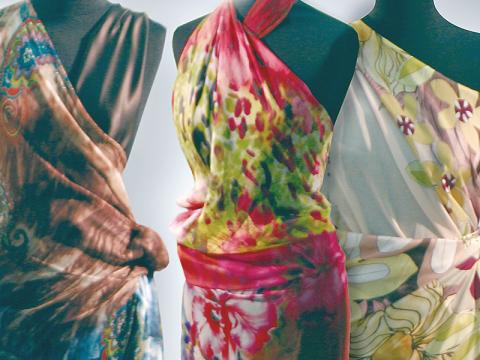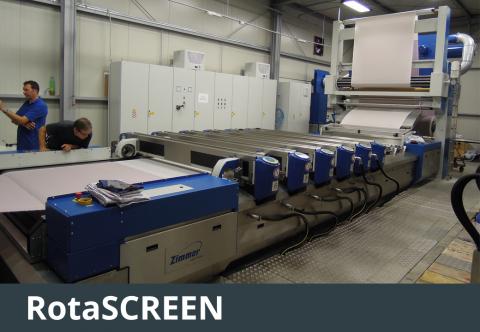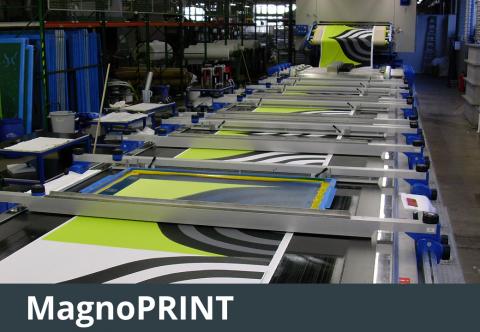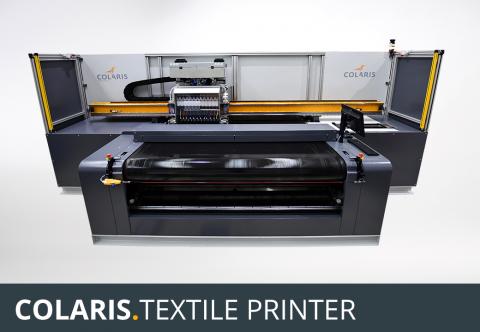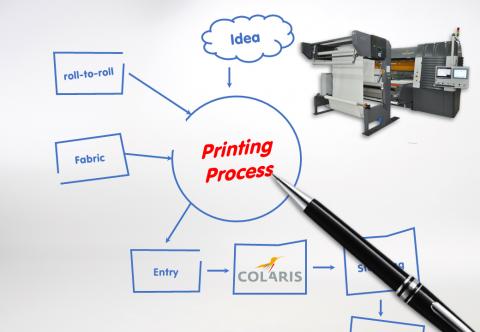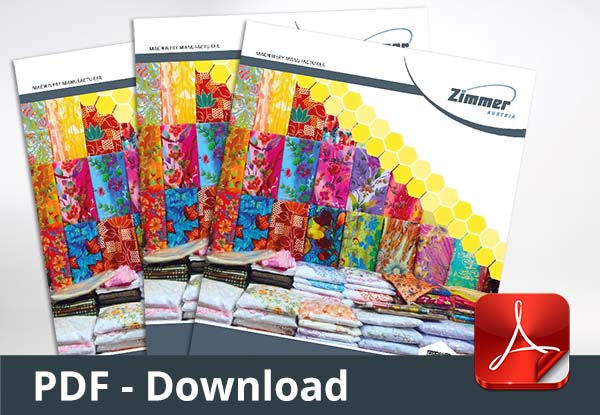Fashion Printing
Basics
- Fabric may be from woven or knitted construction.
- Material may be from cellulose or artificial fiber.
- The construction may be incoherent or firm and tight, open or tense, elastic in length and/or width etc.
- The fabric surface may be flat or structured jacquard, rip, velour, plush or others.
- Fabric weight may range from 20 g/m² up to 300 g/m².
Printing Methods
Fashion may be printed with any type of machine and process:
Printing on Cellulose and Protein Fiber based Fabrics
- Cellulose based fabric can be printed with Reactive or VAT dye inks.
- PA (Nylon) and Protein fiber based fabrics are mostly printed with Acid dye inks.
- Pigment inks may be used on fabric made from any fiber or yarn blend.
- Reactive prints are known for brilliant and bright print results with good washing fastness, but have a limited light fastness, especially with red shades.
- Acid dye prints are very bright, but have limited light fastness properties. Chlorine fastness is poor.
- VAT dye inks have excellent light and wash fastness properties, including chlorine bleach. For real high-end fabrics, VAT dye inks are the best solution.
- Pigment inks are good for high light fastness, but have poor haptics and a low resistance against dry and wet rubbing.
Printing on PES Fabrics
- On PES and PES Microfiber fabrics, direct disperse and direct sublimation inks are used.
- PES inks give bright and brilliant prints and have excellent light, rub and wash fastness properties.
Printing Process
Offline processing
- Ink fixation through steaming process
- Post-print washing to clear the fabric from unfixed dyes and pre-treatment chemicals
- Final fabric finishing according to the customer's individual needs
VAT dye printing
- Inline inkjet pre-treatment applied by the CHROMOJET digital pre-coating unit
- Design printing with COLARIS with VAT dye inks
- Inline fixation for about 40 seconds by steam process
- Inline post-print neutralization and washing-out of unfixed dyes and pre-treatment chemicals
- Final fabric finishing according to the customer's individual needs
COLARIS.PIGMENT PRINTING
- Inkjet pre-treatment of the fabric
- Design printing with COLARIS with inline drying
- Rub fastness improvement by applying a fixing agent, followed by a polymerization process
- Final fabric finishing according to the customer's individual needs
Option: Mechanical finishing to improve the fabric's haptics.
Disperse and direct sublimation dye printing
- Inkjet pre-treatment of the fabric
- Design printing with COLARIS with direct disperse or direct sublimation inks
- Post-print drying - inline right after printing
- HT steam fixation in a loop steamer for 8 to 10 minutes
- Reductive washing and vacuum extraction for high light and rubbing fastness
Option: Inline inkjet pre-treatment applied by the CHROMOJET digital pre-coating unit
Option: SUPRAPRESS penetration support
Option: Inline fixation for about 4 minutes
Printing Machines
As most of the fabrics come with a width of 1,400 to 1,600 mm, the COLARIS.PRINTER with 2,200 mm working width will cover the demand easily.
COLARIS.TEXTILE PRINTER
Equipped with FUJIFILM Dimatix StarFire™ printheads, this printer is perfect for high-volume printing and for special applications.
- The ReadyJet™ ink circulation system guarantees sufficient ink availability at any working condition.
- The ink circulation prevents the sedimentation of solid ink particles. This is important especially when printing with VAT dyes or Pigment inks.
- The COLARIS.PRINTER concept allows a flexible layout, especially in regard to the requirement of different ink dye classes.
- The open ink system offers ink selection from various manufacturers present in the market.
Get more information from our PDF leaflets:
